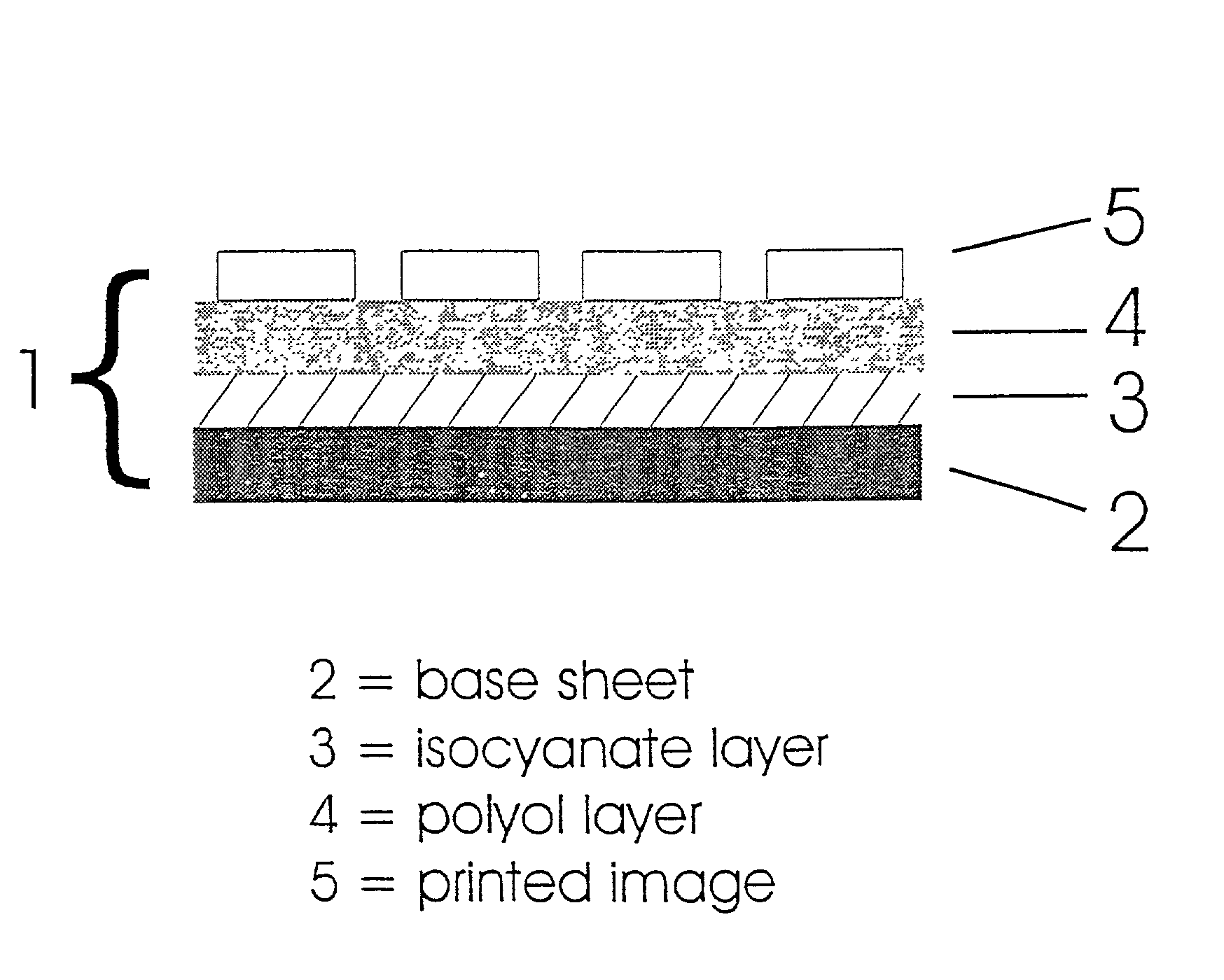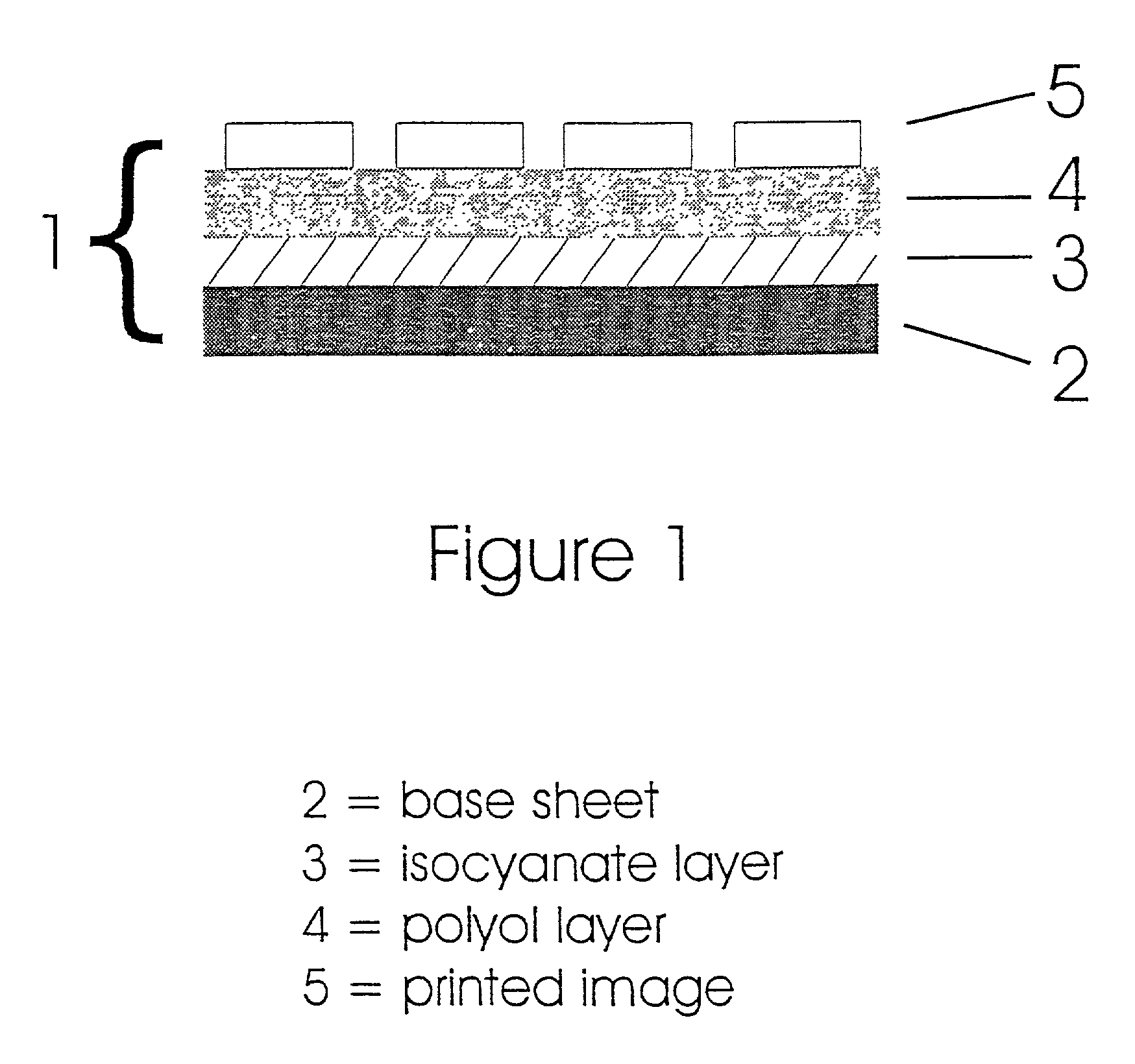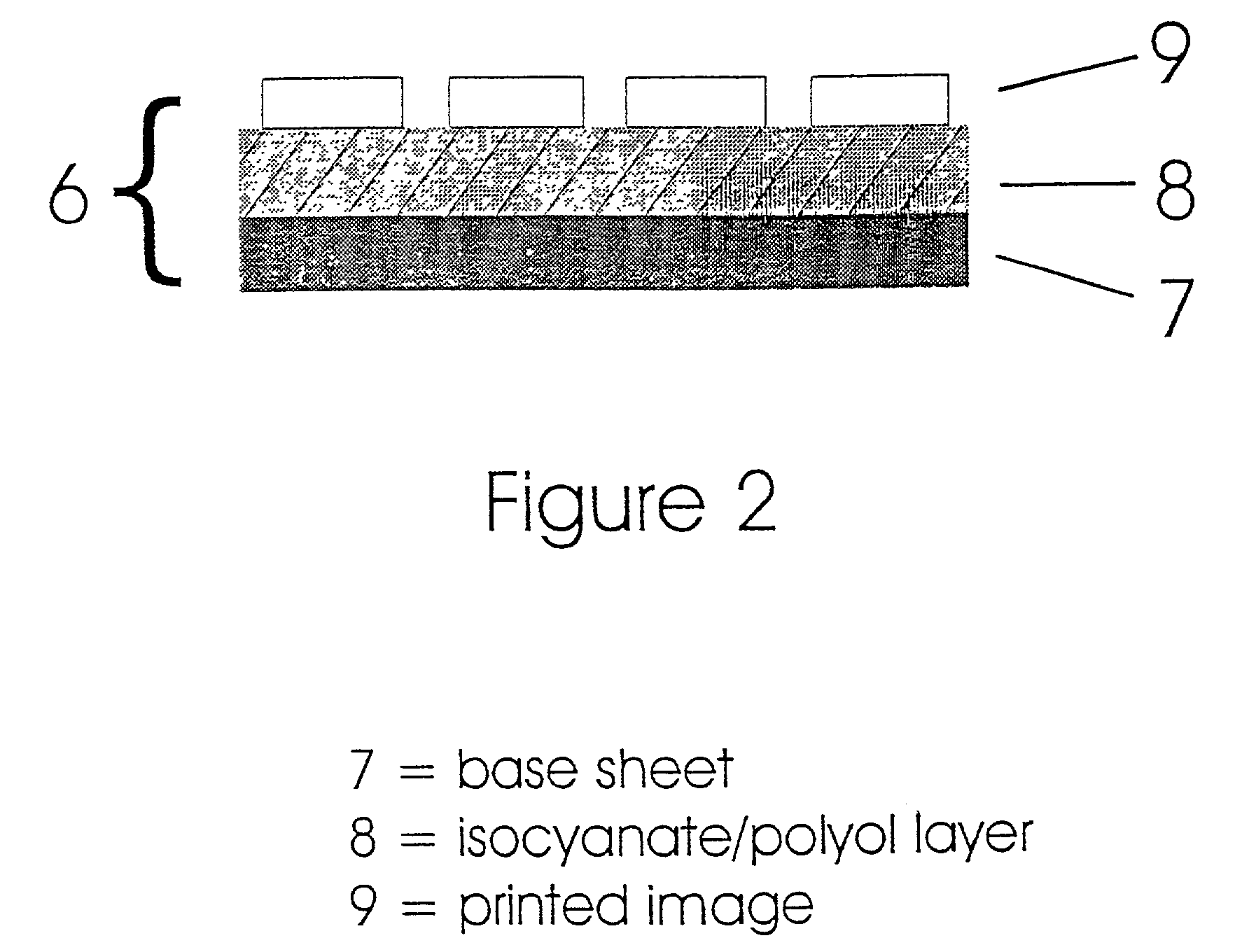Intermediate transfer recording medium
a technology of transfer recording medium and recording medium, which is applied in the direction of coating, printing, thermal imaging, etc., can solve the problems of poor thermal stability, rapid and severe image quality deterioration during the use of the product, and inability to maintain the image, etc., to prevent premature reaction and excellent fade and abrasion resistance
- Summary
- Abstract
- Description
- Claims
- Application Information
AI Technical Summary
Benefits of technology
Problems solved by technology
Method used
Image
Examples
example
[0044]
Weight percentPolyisocyanate25Polyol59Catalyst 1Binder15
[0045]The final substrates of the present invention may be, for example, a textile material, ceramic, metal, wood, or glass. Examples of suitable textile materials are cellulosic fiber, such as cotton, linen, or viscose; protein fibers, such as wool and silk; polyamide fiber, such as nylon 6.6; mixtures of cellulose or polyamide with polyester; and other synthetic fibers, such as acrylic and polyester. Preferred final substrates are those containing active hydrogen capable of cross-linking with a polyisocyanate, such as cellulosic fiber.
PUM
| Property | Measurement | Unit |
|---|---|---|
| Energy | aaaaa | aaaaa |
Abstract
Description
Claims
Application Information
 Login to View More
Login to View More - R&D
- Intellectual Property
- Life Sciences
- Materials
- Tech Scout
- Unparalleled Data Quality
- Higher Quality Content
- 60% Fewer Hallucinations
Browse by: Latest US Patents, China's latest patents, Technical Efficacy Thesaurus, Application Domain, Technology Topic, Popular Technical Reports.
© 2025 PatSnap. All rights reserved.Legal|Privacy policy|Modern Slavery Act Transparency Statement|Sitemap|About US| Contact US: help@patsnap.com



